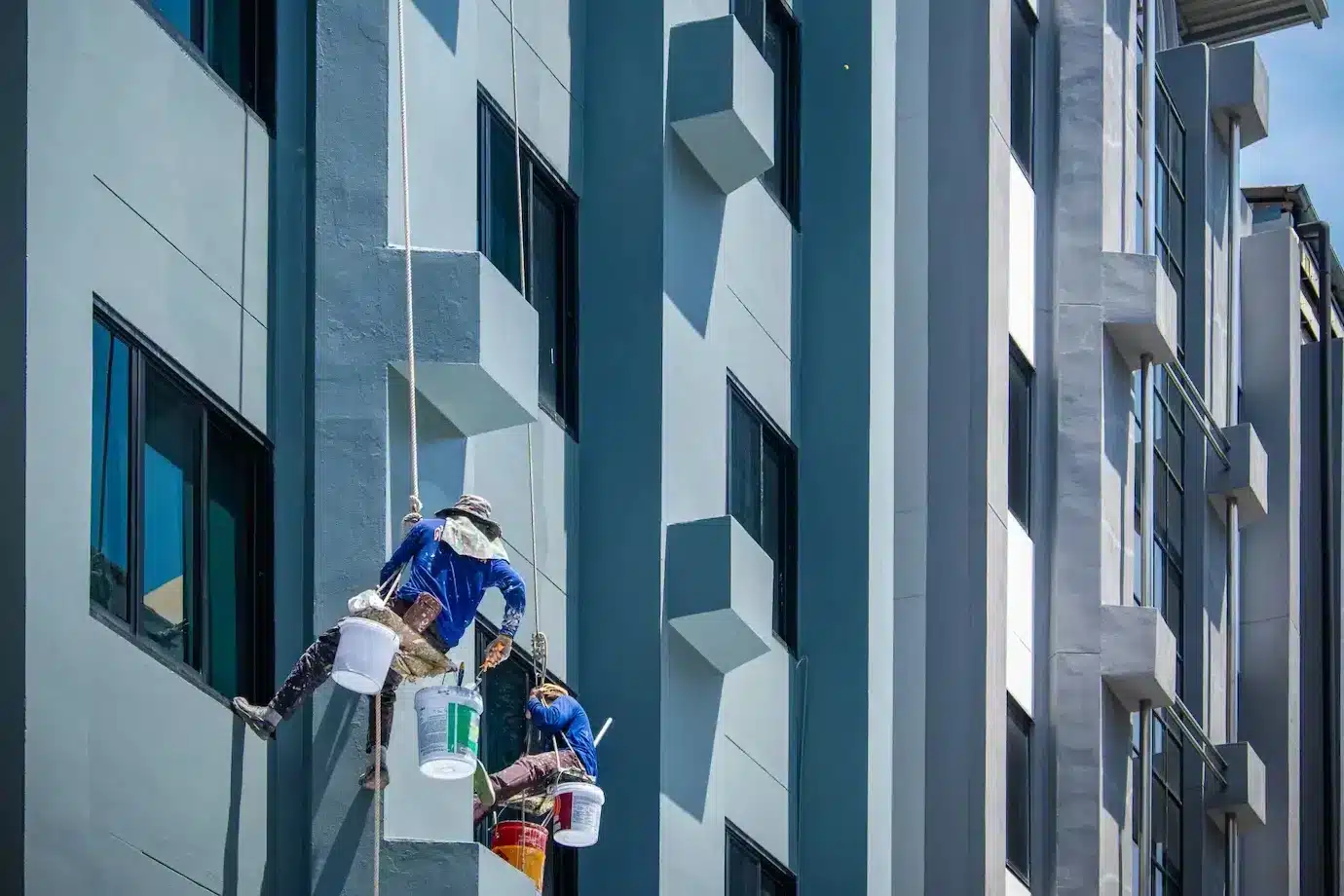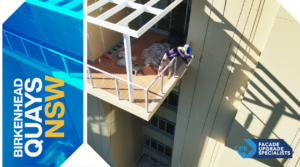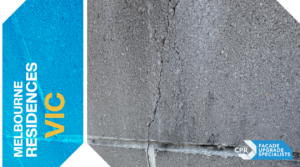One of the primary factors is the size of the project. Larger buildings require more paint, materials, and labor, directly increasing the overall cost. The surface area that needs painting is measured in square footage, and the larger it is, the more resources are needed. Additionally, the complexity of the building’s architecture plays a significant role. Structures with intricate designs, multiple windows, and hard-to-reach areas require more time and specialized equipment, contributing to higher labor costs.
Knowing the cost of commercial painting process is highly necessary to let you set up your budget properly and get the most value from your investment. Different factors such as the size of the project, doing some planning and choosing the right paint for the job can drive up the total cost of painting a commercial building. This guide analyses the key components crafting cost while providing tricks to minimize spending and enhance quality.
6 Factors Affecting the Cost of a Commercial Painting Project
A commercial painting venture has dynamics that affect the budget. These are the things to note for an effective initiation and operation. Below are detailed explanations of the primary factors affecting project expenses.
The cost of a commercial painting project is determined by factors such as the size and complexity of the project, the condition of the surfaces, the type and quality of paint, labor costs, location, and timing.
- Size of the Area to Be Painted
The scale of the project significantly impacts costs, with larger areas necessitating more materials. The square footage dictates the volume of paint required and the time it will take to apply, making it a pivotal factor in calculating the project’s total cost. For expansive commercial spaces, this can mean substantial investments in both paint and manpower.
- Type and Quality of Paint Used
Selecting the right paint involves balancing between performance and price. High-quality, durable paints with specialized properties (such as UV resistance or low VOC levels) are costlier but can offer better longevity and reduce maintenance needs over time. The specific requirements of the commercial space, including exposure to elements and wear, should guide the choice of paint, impacting the project’s upfront costs.
- Surface Preparation Requirements
The condition of the surfaces to be painted heavily influences preparation work, which can be team-intensive and costly. This includes tasks like cleaning, scraping old paint, repairing damages, and priming. Well-maintained surfaces will require less prep work, whereas neglected or damaged areas can significantly increase project costs due to the additional materials needed for restoration.
- Complexity and Accessibility of the Project
Certain parts of the building being difficult to reach, complex details, and the need for special equipment (such as scaffolding or lifts) will contribute to the cost-driven side. Projects that have high ceilings, complex architectural elements, or those that need height-specific safety measures and equipment are typically more tiresome, involve more time, and require more sophistication, which in turn increase the expenses.
- Environmental and Safety Regulations Compliance
Meeting environmental regulations and keeping the safety norms in the workplace may require additional expenses. The projects to paint in environmental friendly ways or to remove the hazardous materials like lead-based paint as an example need special products like Smart Spider Power Ascender Pro and special procedures. The expenses of safety equipment, as well as insurance for working at heights or other difficult conditions also include the safety measures and consequently affect the total cost of the project.
- Timeline and Scheduling Demands
Projects which have very short deadlines might need overtime work or new teams to be added to make it through the schedule, which is going to raise the project cost. On the contrary, an opportunity of booking painter during off-season when Painting contractors have low demand could lead to cheaper services. It is worth noting that the project duration can have a big impact on the total expenditure, typically, the emergency projects are more costly than routine ones.
How to Minimize Cost During a Commercial Painting Project?
The role of cost control in large commercial painting projects cannot be overstated. Correct strategies help to decrease costs of the project in comparison with the one that doesn’t match your requirements. Here are ways to achieve cost-efficiency: Here are ways to achieve cost-efficiency:
- Comprehensive Planning and Quotation Comparison
Do a complete analysis of your project’s scope as a prerequisite to not underestimating your costs. Know and compare the quotes from a number of reliable contractors, making sure to also factor in the value and quality of the service they will offer. So buying before the launch of new models of the products gives you chances to have the best deal and such leverage on negotiation.
- Bulk Purchasing of Materials
If you are going to have a sizeable project, then you can buy the paint and supplies in bulk so as to have a large discount. Normally, it is the suppliers who will give discounts if you buy in large quantities. Working with your contractor on this is one of the ways to make sure you get the right materials and the accurate quantities at the best rates.
- Scheduling Flexibility
It should be noted that timing plays a major role in the overall cost of your project. Contractor’s off-peak season can result in low bid offers as business owners try to use their workers until they are done. Furthermore, take into account the planning of your project with other maintenance or construction activities, so to avoid the logistic conflicts which could be disruptive and lead to cost overruns.
- Investing in High-Quality Paint
Although the price tag of premium paint is higher, it can save you money in the long run, especially for tasks like painting building exterior, where durability and longer lifespan mean less maintenance costs, re-painting, and touch-up jobs. Talk to your contractor about the most cost-saving options, which also ensure that your performance and aesthetic requirements are satisfied.
- Efficient Project Management
A successful project management and coordination of such project can be done by reducing the delays and disruptions which as a result keep the costs to minimum. Communicate clearly with the contractor what the expectations are, the timelines involved, and any problems that may occur in order to avoid costly confusion and reworking.
- DIY Preparation Work
Do the preparatory work that you can on your own, such as cleaning or simple repairs, as it will help you save money. Such can minimize the contractor’s workload, which will, in turn, result in lower project rates. Nevertheless, make sure that you follow professional standards at all levels while doing the work by yourself else you could end up with more work than you started with.
Frequently Asked Questions
What determines the cost of paint?
The price of paint depends on the type of the paint, its quality, ingredients it is made of, the brand it belongs to. Paints that are of good quality and have such characteristics as environmental care, low VOC number, or advanced durability are usually more expensive. These include the pigmentation, binders, and the technology used in the paints formulation which in turn influence the paint prices.
How is painting cost calculated?
The rates of painting are calculated by the area of the work site, type of paint, and any additional services demanded such as the surface preparation or the special finishes requested. The total area (together with the rate of team and materials) yields the total estimated cost of the project.
How does a painting become expensive?
A painting project can quickly turn expensive: the first reason is that it is possible to use special or high-quality paints, the second reason is that thorough surface preparation is required, the third reason is that challenging access to the painting area that requires the use of specialized equipment, and the fourth reason is that it is locality or the expertise of the painter that matters.
What makes a modern commercial painting expensive?
Large-scale modern commercial painting projects are usually expensive for various reasons such as the need for durable paints able to stand the toughest conditions of regular commercial use and compliance with safety and environmental regulations in workplaces, as well as the logistics of painting in operational business environments, which require a high level of expertise and equipment.






